It is not as simple as it seems to design a bathroom. Three aspects need to be managed: look, movability, and function.
It could be difficult to make sure the necessary fittings fit in the available space.
When constructing something new or changing the layout, it’s usually preferable to leave it to the experts.
They will be aware of what can be done inside the current walled space. To best fit the design, a plumber can also offer advice on where to place services.
To guarantee that the three components blend harmoniously in the bathroom, there are conventional design guidelines.
These guidelines for height, spacing, and visuals will guarantee that you create the ideal bathroom design.
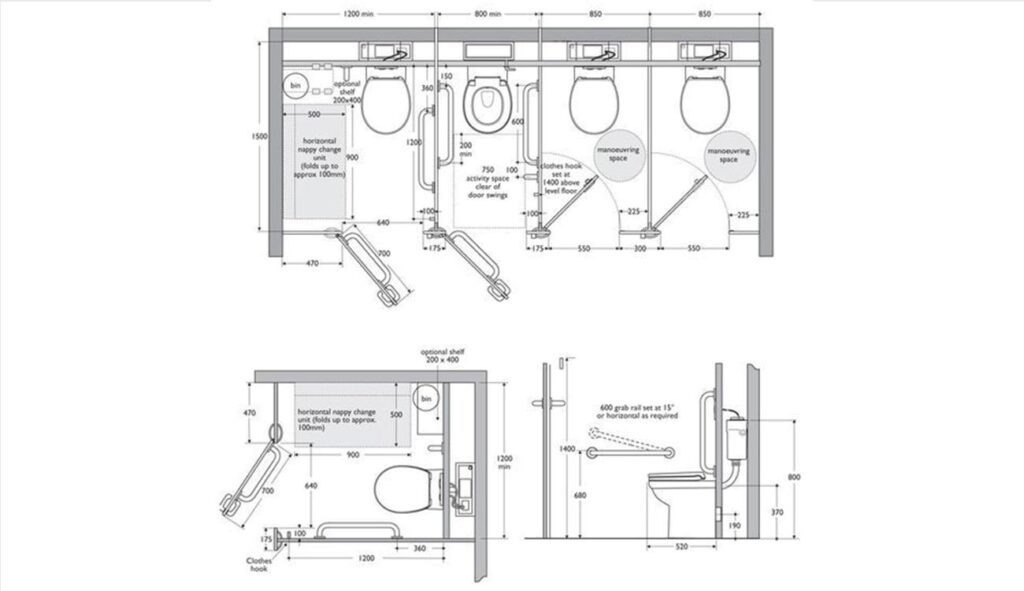
Cover Image Source: https://in.pinterest.com/pin/470485492304764934/
Visuality in the bathroom
As for any other space, the more visually appealing is the space the more we dwell with it, so as for bathrooms too! It starts with door placement; it is not only in the interior part but in architectural planning too.
A window adds to more of it. A shower with an enclosure is a necessity to elevate the whole. Also, the shower should be watertight or positioned away from water spray before placing it next to a window.
Functionality in the bathroom
To have e functional bathroom, the measurements play an important role. Let’s look at some of those,
- WC – The Loo Business
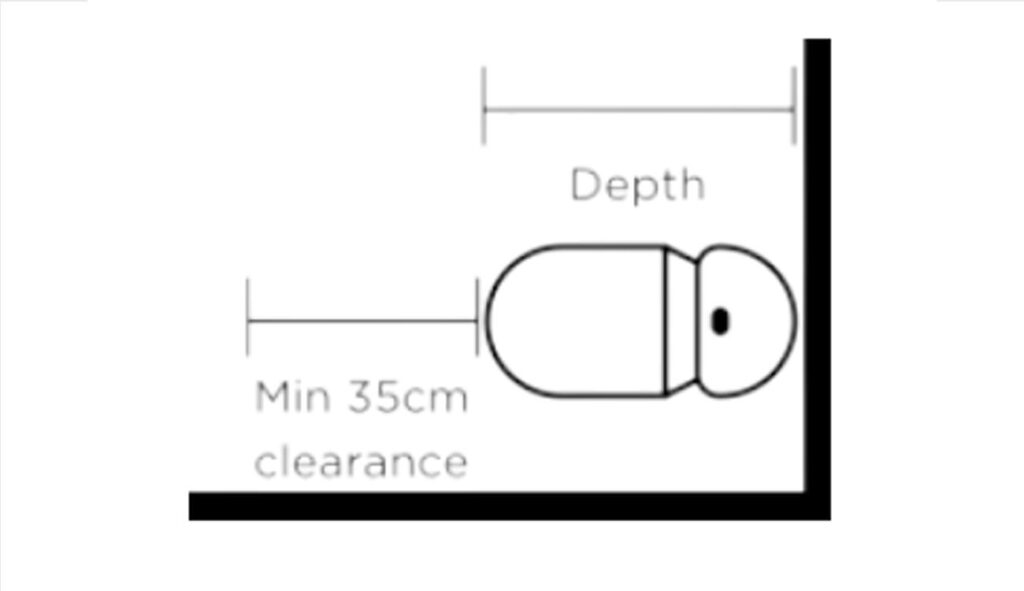
Nobody enjoys stumbling over their knees before conducting business. The toilet must be at least 900 mm wide, with the toilet centered at that measurement. Then, for easy mobility, you will require 800mm in front. Easy.
- Shower – The Relaxation
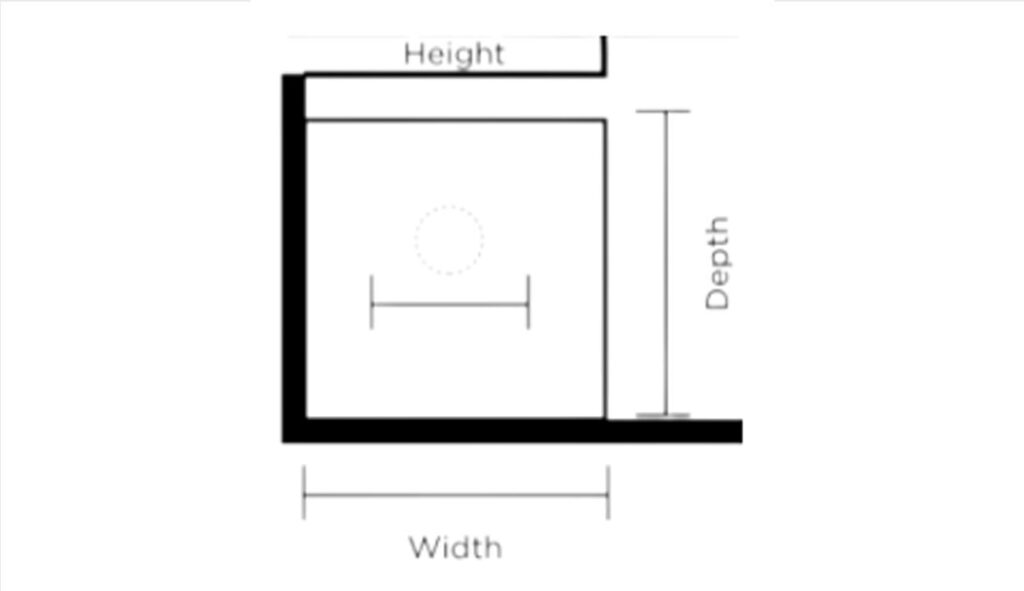
Image Source: https://help.thebluespace.com.au/hc/en-au/articles/4858260051983-How-To-Measure-Your-Bathroom-Space
Australia’s typical shower size is 900 x 900 mm, which is ideal for singing in the shower. However, there is a trend towards larger, more open showers—possibly to practice that dance move as well. The enclosure is then again, a personal choice.
- Baths – The Comfort
A lovely tub for unwinding and taking care of oneself is a tiny piece of luxury in the bathroom.
Australia’s typical bath sizes are described as, the length range of 1500 to 1800 mm, width being between 700 and 800 mm, and, height being 400mm to 600 mm.
Whether choosing a standalone bath or a bath in a hob will determine how much clearance you need around the bath. A minimum hob length of 2 meters and a maximum width of about 1 meter are required for a bathtub in a tiled hob. When choosing a freestanding bath, keep in mind how much space you’ll need for surrounding cleaning. You should have more than enough room to mop using a 200–300 mm radius.
- Vanity – The Storage of aroma
We employ custom cabinetry for our new constructions to enhance the size of our vanity for the bathroom we are building.
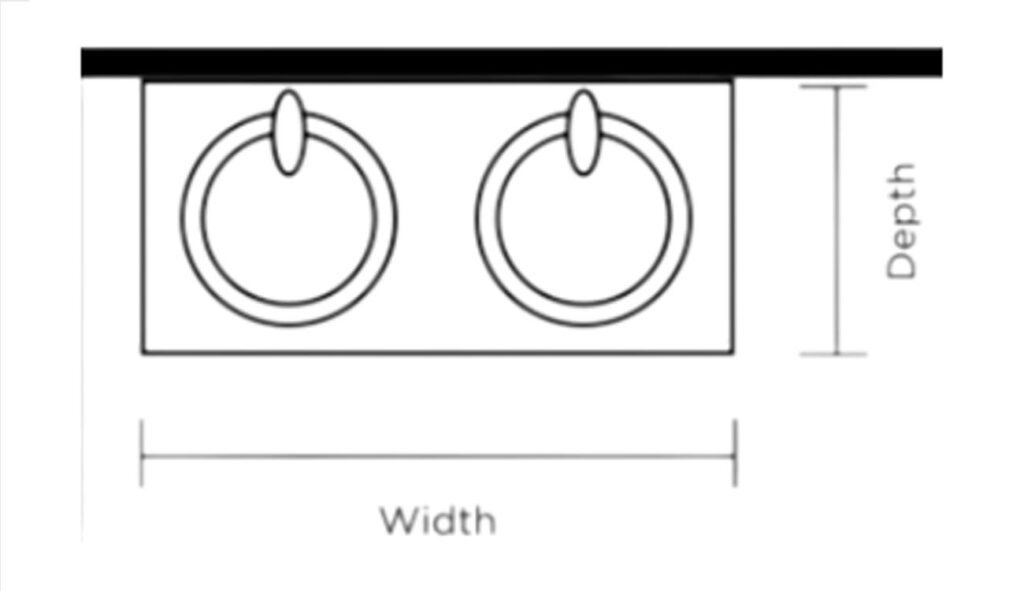
Image Source: https://help.thebluespace.com.au/hc/en-au/articles/4858260051983-How-To-Measure-Your-Bathroom-Space
Vanity height and depth are the two variables taken into account. The typical distance to the top of the stone top is 700–750 mm. The type of basin you select and its measurement will then dictate the tap height. We usually place our mirrors 1200mm off the floor and our vanity wall mixers 1050mm off. This is 420mm on average; it is standard and never changes.
- Basin – The Necessity
The dimensions of basins range from 370 mm to 700 mm. The contentious issue at hand, however, is single versus double basins.
Apart from the visuality and functionality of a bathroom, choosing the right place and planning the lighting of the bathroom is a key aspect. Make sure the shower, bath, and vanity are the appropriate sizes for the space.
Considering space for cleaning, a freestanding bath should have a minimum of 300mm on each end, and your vanity should follow the same rule. The space between your vanity and a wall or shower screen will only collect dust.
If one has to enjoy taking baths, a 1600mm freestanding bath may be somewhat small; a larger inset bath would make much better use of available space.
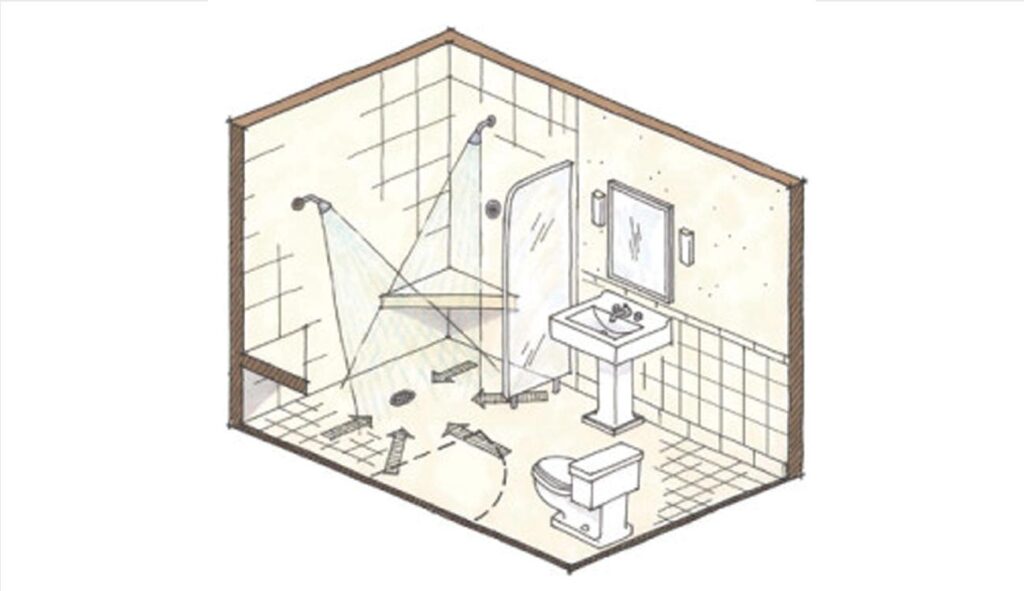
Image Source: https://www.luxurylivingdirect.com/blog/post/how-to-measure-your-bathroom.html
However, the other important thing is frequently disregarded which is lighting. The finest outcome when designing your bathroom layout will come from a tiered lighting arrangement.
Multiple lighting sources, each serving a distinct purpose, are included in a layered lighting design. Wall lights (scones) positioned on either side of the mirror are necessary for task illumination when applying makeup or grooming. The most efficient and attractive way for them to lighten your face is from the front.
Accent lights create a relaxing atmosphere. The usage of hidden LED lights is an excellent alternative because harsh overhead lights are too bright for a soothing bath. They can be left on to create a low-key atmosphere because they don’t use much energy. Place them behind mirrors, beneath shaving cabinets, and under vanities.
Read more about,…
- Easy Toilet paper Stand Design for Minimal Bathrooms
- Reimagining Toilet Paper Holder
- Seductive bathroom vanity with lights fixtures design ideas
- Cool Shower Enclosures Design Ideas for Bathroom Vanities
References:
- https://oakandorange.com.au/standard-bathroom-measurement/
- https://www.luxurylivingdirect.com/blog/post/how-to-measure-your-bathroom.html
- https://postdigitalarchitecture.com/blogs/articles/bathroom-and-restroom-measurements-and-sizes-standards
- https://www.villeroy-boch.com.au/bathroom-and-wellness/planning/planning-tips/house-building/planning-dimensions-in-the-bathroom.html





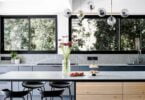

Leave a Comment
You must be logged in to post a comment.